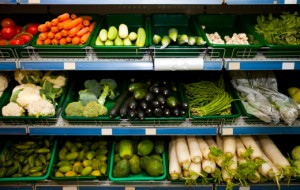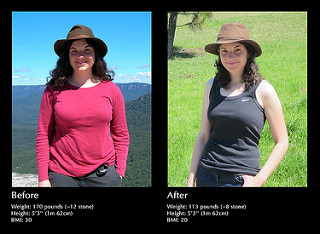Lose More Weight Four Ways To Modify Your Daily Calories
Most of us realize that in order to lose weight we have to reduce our daily caloric intake and/or increase our daily caloric expenditure. The challenge for the average person is to figure out how to do this as simply and painlessly as possible. If we can do these things simply and painlessly, then we have a better chance of continuing to do them and being successful for the long term. So what are some ideas on how we can meet this challenge while keeping it as simple and painless as possible?
Let's keep in mind that most sensible weight loss plans recommend losing no more than two pounds per week. In caloric terms that translates to a change of about 1,000 calories per day. That probably sounds like a lot, but let's look at some simple things that will help.
Here are four ideas that I think meet the bill:
1. No matter what kind of weight loss plan you are on, you need to include exercise as one of the components. Why? Because exercise not only burns calories, it builds muscle. And muscle tissue burns more calories than fat tissue. In other words, you get extra caloric benefit by exercising.
A 175 pound person can burn about 10 calories per minute by walking briskly or jogging slowly. Exercise professionals generally recommend a minimum of 30 minutes on most days of the week of aerobic (walking, etc.) exercise to maintain heart health. Let's do the math. Thirty minutes of aerobic exercise each day will burn about 300 calories. If we throw in 2 days of strength training (which is also recommended), we can be pretty confident that we will average a daily caloric deficit of 300 calories. And that doesn't take into consideration the fact that the aerobic exercise will increase our general metabolic rate, which will help us burn even more calories.
There are a number of researchers out there now that are talking about using the concept of high density, low calorie foods to help us make major, positive adjustments to our diets. Using these concepts will help you to feel fuller, while eating substantially less calories.
2. Try cutting down on some of the high calorie foods that you eat. Remember that fat has twice as many calories as proteins or carbohydrates. Also, sugary foods and many white flour foods have a lot of calories and very little nutritional value. So try to cut down on high fat items as well as foods with a lot of sugar. Cakes and cookies usually have a lot of both.
3. Eat foods that have a higher moisture content. Try including more salads, juicy fruits, and broth based soups in your daily diet. Because of their high water content, these types of foods will add volume without adding calories. This will help you to feel full faster, and might keep you from eating the high calories foods mentioned above.
4. Make sure you include lots of fiber rich foods in your diet. These foods take up more room in our digestive tract, once again helping us to feel fuller. High fiber foods can also help reduce cholesterol and reduce the chance of getting things like colon cancer.
One of the researchers who have done several studies on items 2, 3, and 4 is Barbara J. Rolls, PhD. Her results indicate that following these principles can help a person to reduce their daily caloric intake by 700 to 800 calories. This, coupled with the exercise suggestions in item 1, will help you meet the 1,000 calorie per day target that will allow you to lose a safe 2 pounds of weight per week.
These are suggestions that anyone can follow simply and painlessly. So, give it a try. You may be pleasantly surprised by how easy it can be to lose weight and become healthier.
-
Flat Belly Diet Tips
The flat belly diet will be the diet trend that supposedly promi
-
Reasons for Colon Cleansing
The next time you reach for that fast food––whether it&
-
Munch, Crunch: Experts Dish Up Scrumptious Slimming Snacks
If you open your cupboards and fridge, what percentage of foods do you
-
Soda Pop Machines Lose Their High Calorie Fizz In Schools
After a lengthy battle between anti-obesity advocates and major bevera
-
Best Way to Lose 10 Pounds in 2 Weeks
When we make up our minds about losing weight, there are always certai
-
How I Actually Lost Weight During The Holidays
- DON'T MISS
- Diets and Weight Control Programs
- Weight Loss: It's Not Always What You Eat, But What You Don't Eat (Part 1)
- Positive SelfEsteem For Binge Eaters
- Effectively Lose Weight With These Easy Tip
- Be healthy and start losing weight today!
- Fern Britton Makes Gastric Band Surgery More Popular
- The Fastest Way to Lose Weight Easily!
- The Benefits Of The Rebook Fusion Cross Trainer
- Diet and Weight Loss Advice for Teenagers
- 7 Doctor-Approved Tips To Maintain Your Ideal Weight




